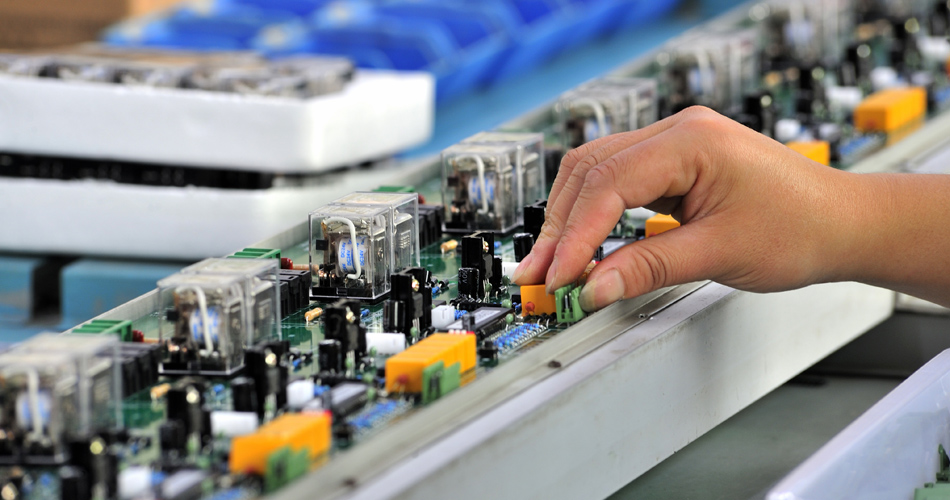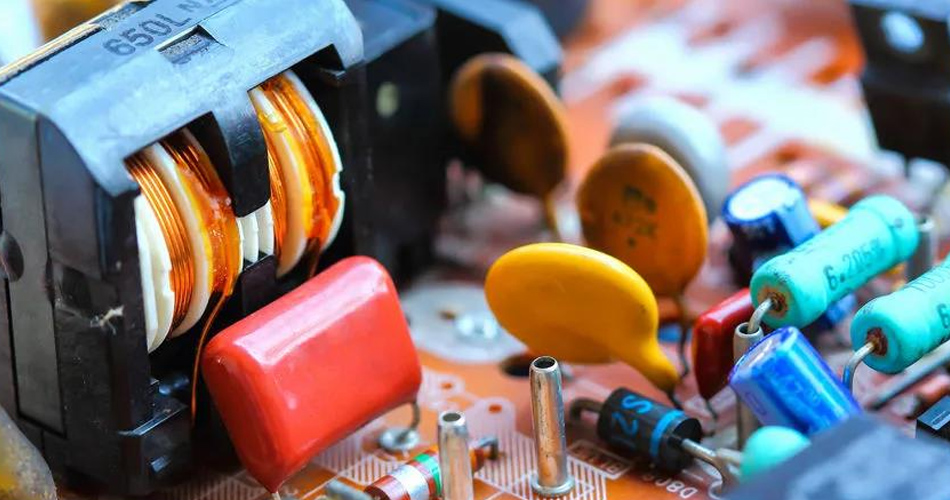
How to repair PCB without drawing in PCBA processing and production?
1、 How to repair the circuit board without drawing?
1. "Chest mapping" is required.
We should thoroughly understand the principles of some typical circuits and be familiar with them. The drawing is dead, and the thought in the head is alive. It can be analogized, reasoned, drawn inferences from one instance, and learned everything.
For example, switching power supply can not be separated from oscillation circuit, switch tube and switch transformer. During inspection, check whether the circuit is vibrated, whether the capacitor is damaged, and whether each triode and diode are damaged. No matter what switching power supply is encountered, the operation is almost the same, and there is no need to force a circuit diagram;
For example, the single chip microcomputer system, including crystal oscillator, three bus (address line, data line, control line), input and output interface chip, can not be overhauled without these ranges; Another example is the analog circuit composed of various operational amplifiers. Even if it changes thousands of times, reasoning based on "virtual short" and "virtual break" can also be done in a coherent way. With good analysis and reasoning skills, even if you encounter equipment you have never seen before, you can only understand the principle.

2. Pay attention to the maintenance sequence.
The shortest path to solve the problem can be found only by paying attention to the maintenance sequence, so as to avoid disorderly poking and dismantling, failure of maintenance and expansion of the fault.
Maintenance is just like a doctor giving a doctor treatment. It also pays attention to "seeing, hearing and inquiring". "Look" means to check the appearance of the faulty board to see if there are any obvious signs of damage, if there are any burned black or cracked components, if there are broken wires and electric leakage caused by corrosion on the circuit board, if there is any leakage of capacitance, and if there is any bulge on the top; "Smell" Use your nose to smell whether there is something burning. Where does the smell come from; "Ask" is very important. Ask the person concerned in detail about the situation at the time of the equipment failure, and infer possible fault parts or components from the situation; "Cut" refers to the use of certain testing instruments and means to check the resistance, voltage, waveform, etc. of circuit parts or components, compare the good and bad circuit boards and observe the difference of parameters, etc.
In fact, there are many problems that you can solve without using a multimeter, and the circuit diagram is naturally eliminated.
3. Be good at summarizing laws.
Generally, after a certain amount of maintenance experience is accumulated, we should be good at summarizing and analyzing the causes of each component damage. Is it improper operation? Lack of maintenance? Unreasonable design? Poor component quality? Natural aging? With these analyses, the next time you encounter a similar fault, although it is not the same circuit board, you will have a little knowledge.
4. Be good at finding information.
Since the advent of the Internet, it has become very easy to find information. The unclear equipment principle and circuit principle can almost be found on the Internet, and any IC data can be found on the Internet.
5. Necessary testing equipment shall be provided.
If you take maintenance as your own business, a certain investment in equipment is necessary. The brand of electric soldering iron, multimeter and common disassembly tools should not be too bad. If possible, get another 100M dual trace oscilloscope, and if possible, set up an online maintenance tester.
2、 Fault Characteristics and Maintenance of Capacitance Damage of Industrial PCBA Circuit Board
The failure caused by capacitor damage is the highest in electronic equipment, especially the damage of electrolytic capacitor.
The capacitance is damaged as follows: 1. The capacity becomes smaller; 2. Total loss of capacity; 3. Electric leakage; 4. Short circuit.
Capacitors play different roles in the circuit, and the faults caused by them have their own characteristics. In the industrial control circuit board, digital circuits account for the vast majority. Capacitors are mostly used as power filter, and less capacitors are used as signal coupling and oscillation circuits.
If the electrolytic capacitor used in the switching power supply is damaged, the switching power supply may not vibrate and have no voltage output; Or the output voltage filtering is not good, and the logic of the circuit is confused due to the unstable voltage, which shows that the machine works well or cannot be started.
If the capacitance is not between the positive and negative poles of the power supply of the digital circuit, the fault performance is the same as above. This is particularly evident on the computer motherboard. Many computers can not be started or can be started after several years of use. When the chassis is opened, the phenomenon of electrolytic capacitor bulging can often be seen. If the capacitor is removed to measure the capacity, it is found that it is much lower than the actual value.
The life of capacitor is directly related to the ambient temperature. The higher the ambient temperature is, the shorter the life of capacitor is. This rule applies not only to electrolytic capacitors, but also to other capacitors.
Therefore, when looking for fault capacitors, we should focus on the capacitors close to the heat source, such as those near the radiator and high-power components. The closer they are, the more likely they are to be damaged.
Some capacitors have serious electric leakage, which can even be hot when touched by fingers. Such capacitors must be replaced.
In the maintenance of good and bad faults, except for the possibility of poor contact, most faults are caused by capacitor damage.
Therefore, when encountering such faults, we can focus on checking the capacitor. It is often surprising to replace the capacitor (of course, we should also pay attention to the quality of the capacitor, and choose a better brand, such as Ruby, Black Diamond, etc.).
3、 Characteristics and discrimination of resistance damage
To understand the damage characteristics of the resistance, it is not necessary to spend much time.
Resistance is the most numerous component in electrical equipment, but it is not the component with the highest damage rate. Open circuit is the most common resistance damage. It is rare for the resistance value to become larger, and it is rare for the resistance value to become smaller. Common types include carbon film resistor, metal film resistor, wire wound resistor and fuse resistor.
The first two types of resistors are the most widely used, and their damage characteristics are: first, the damage rate of low resistance (below 100 Ω) and high resistance (above 100k Ω) is high, and the damage rate of intermediate resistance (such as hundreds of ohms to tens of kiloohms) is rare; Second, when the low resistance resistance is damaged, it is often burnt and blackened, which is easy to find, while when the high resistance resistance is damaged, there is little trace.
Wire wound resistance is generally used for large current limiting, and the resistance value is not large. When the cylindrical wire wound resistance is burnt out, some will be blackened, or the surface will be cracked, and some will have no trace. Cement resistance is a kind of wire wound resistance, which may break when burned out, otherwise there is no visible trace.
When the fuse resistor is burnt out, some surfaces will blow off a piece of skin, and some have no traces, but they will never be burnt and blackened. According to the above characteristics, we can focus on checking the resistance and quickly find out the damaged resistance.
According to the characteristics listed above, we can first observe whether the low resistance resistance on the circuit board has burnt black traces. Then, according to the characteristics of most open circuits or large resistance values when the resistance is damaged, and the high resistance resistance is easy to be damaged, we can use a multimeter to directly measure the resistance at both ends of the high resistance resistance on the circuit board.
If the measured resistance value is greater than the nominal resistance value, the resistance must be damaged (it is important to make a conclusion after the resistance value is stable, because there may be a charging and discharging process in the circuit due to parallel capacitor elements). If the measured resistance value is smaller than the nominal resistance value, it is generally ignored. In this way, each resistance on the circuit board is measured once. Even if you "kill" 1000 by mistake, you will not miss one.
4、 A Method for Judging Operational Amplifiers
The ideal operational amplifier has the characteristics of "virtual short" and "virtual break", which are very useful for analyzing the operational amplifier circuit of linear application.
In order to ensure the linear application, the operational amplifier must work in a closed loop (negative feedback). If there is no negative feedback, the op amp under open-loop amplification becomes a comparator.
If you want to judge whether the device is good or bad, you should first distinguish whether the device is used as an amplifier or a comparator in the circuit.
From the figure, we can see that no matter what type of amplifier, there is a feedback resistance Rf, so we can check the feedback resistance from the circuit during maintenance, and use a multimeter to check the resistance between the output end and the reverse input end.
If the deviation is large, such as more than a few M Ω, we can probably be sure that the device is used as a comparator. If the resistance is smaller than 0 Ω to tens of k Ω, then check whether there is a resistance connected between the output end and the reverse input end, and if there is one, it must be used as an amplifier.
According to the principle of virtual short of the amplifier, if the operational amplifier works normally, the voltages at the same direction input end and the reverse input end must be equal, even if there is a difference, it is mv level. Of course, in some high input impedance circuits, the internal resistance of the multimeter will have some influence on the voltage test, but generally it will not exceed 0.2V. If there is a difference of more than 0.5V, the amplifier will definitely be damaged!
If the device is used as a comparator, the same direction input terminal and reverse direction input terminal are allowed to be different,
If the same direction voltage is greater than the reverse voltage, the output voltage is close to the maximum positive value;
If the voltage in the same direction is less than the reverse voltage, the output voltage is close to the maximum value of 0V or negative (depending on dual power supply or single power supply).
If the detected voltage does not conform to this rule, the device will be damaged! In this way, you do not need to use the substitution method, and you do not need to remove the chip on the circuit board to judge the quality of the operational amplifier.
5、 A Trick to Test SMT Components with Multimeter
Some SMD components are very small, which makes it inconvenient to test and repair with an ordinary multimeter probe. First, it is easy to cause short circuit. Second, it is inconvenient for the circuit board coated with insulating coating to contact the metal part of the component pin. Here is a simple method, which will bring a lot of convenience to the detection.
Take two sewing needles of the smallest size, (deep industrial control maintenance technology column) and close them to the multimeter probe, then take a thin copper wire in a multi strand cable, use the thin copper wire to bind the probe and the sewing needle together, and then solder them firmly.
In this way, when measuring SMT components with a stylus with a small tip, there is no risk of short circuit. In addition, the tip can puncture the insulation coating, directly hit key parts, and no longer bother to scratch the film.
6、 Overhaul Method of PCBA Circuit Board Common Power Short Circuit Fault
During the maintenance of PCBA circuit board, the fault of short circuit of public power supply is often serious. Because many devices share the same power supply, each device using this power supply is suspected of short circuit.
If there are not many components on the board, the short circuit point can be found by using the method of "hoeing the earth". If there are too many components, it depends on luck whether "hoeing the earth" can hoe the situation.
A more effective method is recommended here. With this method, you can get twice the result with half the effort and often find the fault point quickly.
There should be a power supply with adjustable voltage and current. The voltage is 0-30V, and the current is 0-3A. This power supply is inexpensive, about 300 yuan.
Adjust the open circuit voltage to the power supply voltage level of the device. First, adjust the current to the minimum. Apply this voltage to the power supply voltage point of the circuit, such as the 5V and 0V terminals of 74 series chips. Slowly increase the current depending on the degree of short circuit. Touch the device with your hand. When you feel that a device is obviously hot, this is often a damaged component. You can take it down for further measurement and confirmation.
Of course, during operation, the voltage must not exceed the working voltage of the device, and the connection must not be reversed, otherwise other good devices will be burned.
7、 A small rubber to solve big problems
More and more boards are used in industrial control, and many of them are inserted into the slots with gold fingers Due to the harsh environment of the industrial site and the dusty, humid and corrosive gas environment, it is easy to cause the board to have a bad contact fault. Many friends may solve the problem by replacing the board, but the cost of purchasing the board is very considerable, especially for some imported equipment. In fact, you might as well use an eraser to repeatedly wipe the golden finger, clean up the dirt on the golden finger, and try the machine again. Maybe it will solve the problem! The method is simple and practical.
8、 Analysis of Electrical Faults of Good and Bad
In terms of probability, the electrical faults of good and bad times generally include the following situations:
1. Poor contact.
Poor contact between the board and slot, no connection when the cable is broken, poor contact between the cable plug and terminal block, and faulty soldering of components are all included in this category;
2. The signal is interfered.
For digital circuits, under specific conditions, faults will appear. It is possible that the control system is indeed affected by too much interference, and the parameters of individual components or the overall performance parameters of the circuit board have changed, making the anti-interference ability tend to the critical point, thus causing faults;
3. The thermal stability of components is poor.
From a large number of maintenance practices, the thermal stability of electrolytic capacitor is poor, followed by other capacitors, triodes, diodes, ICs, resistors, etc;
4. There is moisture and dust on the circuit board.
Moisture and dust will conduct electricity with resistance effect, and the resistance value will change in the process of thermal expansion and cold contraction. This resistance value has a parallel effect with other components. If this effect is strong, the circuit parameters will be changed, causing faults;
5. Software is also considered.
Many parameters in the circuit are adjusted by software. The margin of some parameters is adjusted too low, which is in the critical range. When the operating condition of the machine meets the reason for the software to judge the failure, the alarm will appear.







